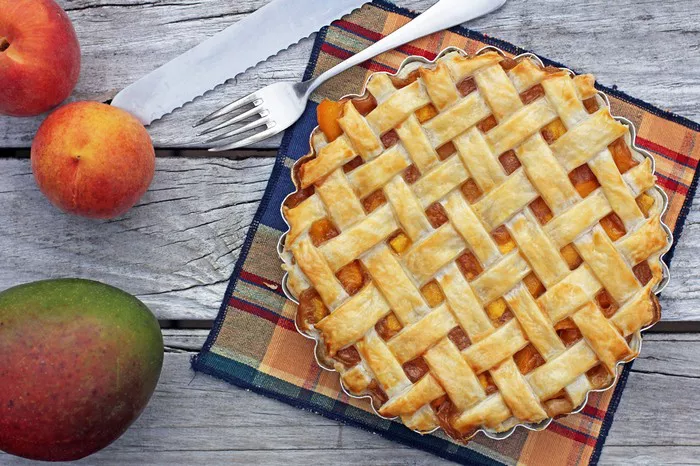In a world where grocery bills seem to skyrocket, many people find themselves facing a common dilemma: how to eat healthily without breaking the bank. The misconception that healthy food is expensive can discourage individuals from making nutritious choices, but the truth is that there are plenty of affordable options available. In this article, we will embark on a journey to discover the cheapest healthy food choices that can fit into any budget, proving that eating well doesn’t have to be a financial burden.
1. The Importance of Eating Healthy on a Budget
Eating a nutritious diet is crucial for maintaining good health, boosting immunity, and preventing chronic diseases. A balanced diet rich in fruits, vegetables, whole grains, lean proteins, and healthy fats provides the body with essential nutrients and energy to function optimally. However, the perception that healthy food is expensive has led many to opt for cheaper, processed alternatives that may lack nutritional value.
Finding cost-effective ways to incorporate nutrient-dense foods into daily meals can lead to significant health benefits in the long run. Investing in your health through smart food choices can reduce the risk of costly medical expenses associated with diet-related illnesses. By making informed decisions and seeking out the cheapest healthy options, individuals can improve their well-being without straining their finances.
2. Buy in Bulk
When it comes to saving money on healthy food, buying in bulk can be a game-changer. Purchasing larger quantities of staples like grains (rice, oats, quinoa), legumes (beans, lentils), and nuts can significantly reduce the cost per serving. Many stores offer bulk sections where you can scoop out the desired amount of these items, allowing you to buy just what you need.
Buying in bulk also applies to frozen vegetables and fruits, which are often more affordable than fresh produce and have a longer shelf life. Stocking up on frozen fruits and vegetables ensures you always have nutritious options on hand, reducing the need for frequent grocery store visits.
3. Seasonal and Local Produce
Seasonal and local produce tends to be fresher, more flavorful, and more budget-friendly. When fruits and vegetables are in season, they are abundant, which can drive prices down. Local produce also incurs lower transportation costs, making it more affordable compared to items that have been shipped long distances.
Visit farmers’ markets or join a community-supported agriculture (CSA) program to access fresh, locally sourced produce at reasonable prices. Additionally, consider preserving seasonal produce by freezing or canning them to enjoy their benefits throughout the year.
4. Frozen Fruits and Vegetables
Frozen fruits and vegetables are a cost-effective alternative to fresh produce, and they offer comparable nutritional value. They are often harvested at peak ripeness and then frozen, locking in essential nutrients. Furthermore, frozen produce eliminates the risk of spoilage, reducing food waste and saving money in the long run.
These frozen options are versatile and convenient, making them perfect for adding to smoothies, soups, stir-fries, and other dishes. Keep an assortment of frozen fruits and vegetables in your freezer, and you’ll always have nutritious ingredients ready to whip up a quick and healthy meal.
5. Embrace Whole Grains
Whole grains, such as brown rice, oats, whole wheat pasta, and quinoa, are not only nutritious but also economical. Compared to their refined counterparts, whole grains retain their bran and germ, providing essential nutrients like fiber, vitamins, and minerals.
Buying whole grains in bulk or larger packages can lead to substantial savings. Additionally, they can be used in various recipes, including soups, salads, and grain bowls, making them a versatile and cost-effective staple.
6. Affordable Proteins
Proteins are an essential component of a healthy diet, but they can also be one of the more expensive items on a grocery list. However, there are budget-friendly protein options that can fit into any meal plan.
Beans and Lentils: Beans and lentils are excellent sources of plant-based protein and fiber. They are inexpensive, filling, and versatile, making them ideal for soups, stews, salads, and even homemade veggie burgers.
Eggs: Eggs are a budget-friendly protein source packed with essential nutrients. They can be used in a variety of dishes, from breakfast scrambles to quiches and frittatas.
Canned Tuna and Salmon: Canned tuna and salmon offer an affordable way to incorporate fish into your diet. They are rich in omega-3 fatty acids and can be used in sandwiches, salads, and pasta dishes.
Chicken Thighs and Drumsticks: While boneless, skinless chicken breasts are often pricier, chicken thighs and drumsticks are more budget-friendly options. They can be roasted, grilled, or used in slow-cooker recipes.
7. Minimize Processed and Convenience Foods
Processed and convenience foods can be convenient, but they are often loaded with added sugars, unhealthy fats, and sodium. These items not only contribute to poor health outcomes but can also be more expensive compared to whole foods.
Instead of buying pre-packaged snacks, consider making your own using budget-friendly ingredients like popcorn, nuts, and dried fruits. Similarly, cooking meals from scratch using fresh and affordable ingredients can lead to significant cost savings while promoting a healthier diet.
8. Plan and Prep Ahead
Meal planning and prepping can be powerful tools for saving money and eating healthily. Set aside some time each week to plan your meals, taking into account the ingredients you already have on hand and what’s on sale at the grocery store.
By preparing larger batches of meals, you can portion them out for multiple servings, reducing the need for frequent cooking and minimizing food waste. Investing in reusable containers can help keep your prepped meals fresh and ready to go.
Conclusion
Eating healthy on a budget is not only possible but also essential for promoting overall well-being and managing health-related costs. With thoughtful planning, smart shopping strategies, and a willingness to explore affordable options, you can embrace a nutritious diet without overspending.
Remember that eating healthy on a budget is about making conscious choices and prioritizing your health. By adopting cost-effective strategies and embracing a balanced diet, you can pave the way for a healthier lifestyle that is financially sustainable in the long run. Your journey towards affordable and nutritious eating starts with small steps and informed decisions, ultimately leading to improved well-being and financial wellness.

























